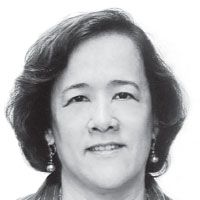Phl economy steered on aerodynamics

A yearly tradition we have observed at the Tuesday Club in the first week of the new year is to invite to our weekly breakfast forum Bangko Sentral ng Pilipinas (BSP) Governor Amando “Say” Tetangco Jr. Through these past years, Gov. Tetangco has been dutifully doing this special task to apprise hard-nosed journalists and columnists about the past year’s key indicators of economic performance and what lies ahead for the country’s economy in 2016.
That is, at least for the remaining six months of the Aquino administration. Re-appointed in June 2011 by President Aquino for another five-year term as BSP governor, Tetangco will remain in office when the newly elected president of the country takes over at Malacañang at noon of June 30 this year.
“As an independent constitutional institution, the BSP is in a rare position to help provide continuity of the stable economic environment that has been a source of strength for our economy,” Tetangco reassured us at the end of his yearly report at the Tuesday Club.
As BSP governor, Tetangco also chairs the Monetary Board, the highest policy-making body on monetary matters affecting the country’s economy. Tetangco first became BSP governor in 2005 and would remain in office until June 2017. While the BSP is a constitutionally autonomous body, Tetangco also serves as one of the economic advisers of the President.
Many of us came late and nearly missed Tetangco’s annual report yesterday at the Tuesday Club we regularly hold at EDSA Shangri-La in Mandaluyong City. Due to multiple vehicle collision at the north-bound lane of EDSA Guadalupe early morning, we were among the trapped motorists in hours-long traffic gridlock at EDSA.
Our good friend John Forbes, senior adviser of the American Chamber of Commerce of the Philippines, earlier warned that if roads and other infrastructure are not upgraded immediately, the traffic mess in Metro Manila will get much worse before it gets any better. Forbes noted in particular the annual car growth increase outpaces improvement of existing roads and construction of new road network.
Tetangco admitted there has been a slowdown in government spending for infrastructure last year. However, Tetangco cited the government spending made a “strong comeback” with 17.4 percent increase during the third quarter of 2015. From a negative growth (2.5 percent) in the same period in 2014, Tetangco credited government spending for giving the much needed push to the Philippine economy in the third quarter of last year.
No less than the Commission on Audit also called the attention of the Department of Public Works and Highways why it has not spent its programmed funds to carry out the infrastructure program. Of the total cash allocations of P39.039 billion received by 29 offices of the DPWH, the COA reported P10.787 billion, or 28 percent was not utilized in 2014.
The BSP governor noted the year 2015 just ended was yet another challenging one for policymakers, not just in the Philippines but worldwide as growth in the global economy remained uneven.
Tetangco pointed to “global financial markets gyrated with the market’s reading or misreading of the US Federal’s timing on its policy rate lift-off. World oil prices fell sharply as supply surpassed demand, raising concerns over “deflation risks in a generally weak global environment.”
On the domestic front, Tetangco conceded the lower-than-programmed government spending during the first half of 2015 added to the effect of pressures coming from the global economy. Adding to our country’s woes were the effects on our country’s agricultural sector by intensification of the El Niño phenomenon. Weather experts predict a prolonged dry spell to extend to first half of 2016.
Tetangco further reported the Philippine economy was able to demonstrate notable resilience as it grew at an accelerated pace of 6.0 percent as of third quarter last year. This made the Philippines one of the fastest-growing economies in the Asian region despite bottlenecks from within and outside factors.
The BSP governor enumerated other key economic indicators that demonstrated the underlying factors behind the sustained resilience of the Philippine economy last year.
• Consumer spending also remained robust supported by a benign inflation environment and improving employment conditions;
• The financial system continued to be sound, stable, and inclusive, supported in part by sustained banking reforms and financial inclusion efforts pursued by the BSP;
• The country’s external current account remained in surplus and improvements in external payments dynamics also served to help shield the economy and the domestic financial markets from financial market volatility;
• Remittances from overseas Filipinos continued to be resilient ($20.6 billion for January-October 2015);
• International reserves remained at a comfortable level ($80.6 billion as of end-November 2015, equivalent to 10.3 months of import cover);
• External debt-to-GDP (gross domestic product) ratio continued to improve (26.0 percent as of end-September 2015 from 50.2 percent in 2006);
• Third-party sentiment on the domestic economy’s prospects also remained bullish. For example, Fitch upgraded its outlook on the Philippine economy to “positive” from “stable” in September 2015.
Given these very strong macro-economic fundamentals, the BSP governor likened the Philippine economy to an aircraft being steered in smooth or in turbulence during flight.
When the next set of policy-makers after President Aquino comes in, the BSP chief underscored the need to work toward achieving what in aerodynamics is called “dynamic stability.”
In aerodynamics, dynamic stability describes how an aircraft behaves when its original flight is interrupted. As my pilot son described it, it refers to the plane’s ability to oscillate and use inherent restoring characteristics to stabilize. In the context of an economy, Tetangco pointed to sound macro-fundamentals as the inherent stabilizers.
In the midst of all these potential challenges in 2016, the BSP governor vowed to keep the Philippine economy steadily on course while running on the aerodynamics principle on a flight path of inclusive growth for all Filipinos.
- Latest
- Trending



























